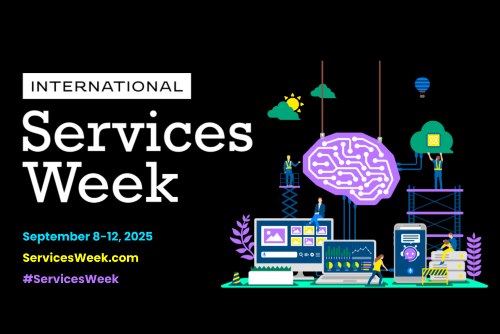Three steps to profitable project delivery

The world of professional services has undergone a remarkable transformation in recent years, leaving enterprises with a critical challenge. For many companies the focus has historically been the pursuit of growth at all costs, whereas they must now adapt to a landscape where profitability is equally, if not more important.
Gone are the days when companies could launch and scale on borrowed money, prioritising expansion regardless of the underlying cost. Icons of this decades-long era, such as Amazon, spent years in the red before achieving tech titan status. Today, a more challenging business environment, combined with persistently high interest rates is making investors more vigilant and causing them to demand a more rapid return on their outlay. The rules of the game are evolving, ushering in a reality where the most successful businesses are not just about revenue growth; they prioritise balance, sustainability, and the vital art of turning a profit.
For the last two decades, many software organisations have operated in the grey zone, teetering between profit and loss. Companies embraced the cloud model and offered ‘Software as a Service’ business models, with success predicated upon the ongoing renewal of subscriptions. Their stock market valuations were built on the promise of growth and the allure of future revenue potential.
However, the professional services teams responsible for implementing and supporting these tools often ran at a loss. Their primary aim during this period was to protect the brand by ensuring that projects were delivered successfully and customers were satisfied. The assumption was that this would translate into renewed software contracts, improved referrals and additional revenues from both new and existing customers. Unfortunately this chase for top line growth and revenue at all costs meant that projects were often priced to win against the competition, but the actual cost of delivery was either understated or cross subsidised. As a result, even though new business had been acquired, this was at the expense of achieving the company’s profitability targets.
The market landscape has now shifted and the increased scrutiny on all things cost related has translated into new models for pricing and delivery. For companies that offer billable consulting and project services, there’s a call for a more well-rounded approach, one that values profitability as an integral component of a company’s worth. Professional services teams are often now required to be profit contributors in their own right, rather than just additional cost centres for the organisation as a whole.
Learn how
The path to improved profitability
So, what strategies can organisations employ to navigate this transition effectively, and ensure profitable project delivery?
Whether they’re delivering projects on-site or off-site, the best services businesses are disciplined about addressing internal weaknesses that threaten their long term performance. They put the focus on efficiency and accuracy.
A successful project is built on strong foundations. Accurate estimating of elements such as the scope of work, deliverables, resources, rate cards and skills is paramount. Understanding and accounting for the hidden costs of both developing a bid and ensuring successful service delivery is critical. Clarity in terms of time, effort and resources, can prevent budget overruns, ensuring that services not only generate revenue but also consistently meet both customer expectations and profitability targets.
In addition, frequent changes can also lead to customer dissatisfaction and margin erosion. It is important to get the service requirements right from the start and this requires a common view of the customer opportunity that is shared across the enterprise. This enables the business to avoid excessive change requests during the transition from the sales team to service delivery and also ensures the certainty of project success.
Once the business has been won and the professional service team is engaged, there are three key strategies to adopt which will ensure a better grasp on these hidden service delivery cost-sinks. They are:
1.) Optimising resource utilisation
Smartly allocating resources to deliver the task in hand in the most effective and efficient manner. This means ensuring that projects can be rapidly staffed with the right people, with the right skills, at the right time and for the right cost, minimising the risk of burnout and optimising opportunities for personal development. This requires a common source of resourcing data across the business, combined with the ability to accurately match forecast demand with organisational capacity.
2.) Breaking down silos
Encouraging collaboration and information sharing within the organisation by removing silos and having a consistent, reliable platform of business applications to underpin the business. Not having to operate with a mish-mash of software integrations reduces errors, removes time delays, eliminates the duplication of data and as a result minimises revenue leakage. Instead the ability to deliver seamless, automated business processes will drive cost efficiencies and improved customer satisfaction.
3.) Building organisational resilience
Business transformation is not just a tactical quick-fix. It is vital for professional services organisations to continue to evolve, meeting the ever changing needs of customers and addressing the increasing competition from industry peers. This requires companies to be flexible and future proof, with the ability to continually adapt to challenges and unforeseen disruptions, ensuring long-term sustainability. But this only happens by design, and with a technology infrastructure upon which the organisation can rely.
By streamlining operational efficiency, fostering collaboration, and building resilience, professional services companies can navigate the shifting tides of industry expectations. They can emerge as not only profitable, but more resilient and successful than ever before.
To understand how other companies have achieved this transition check out their success stories here.
Recent Articles
Maximize your Salesforce investment with Certinia






